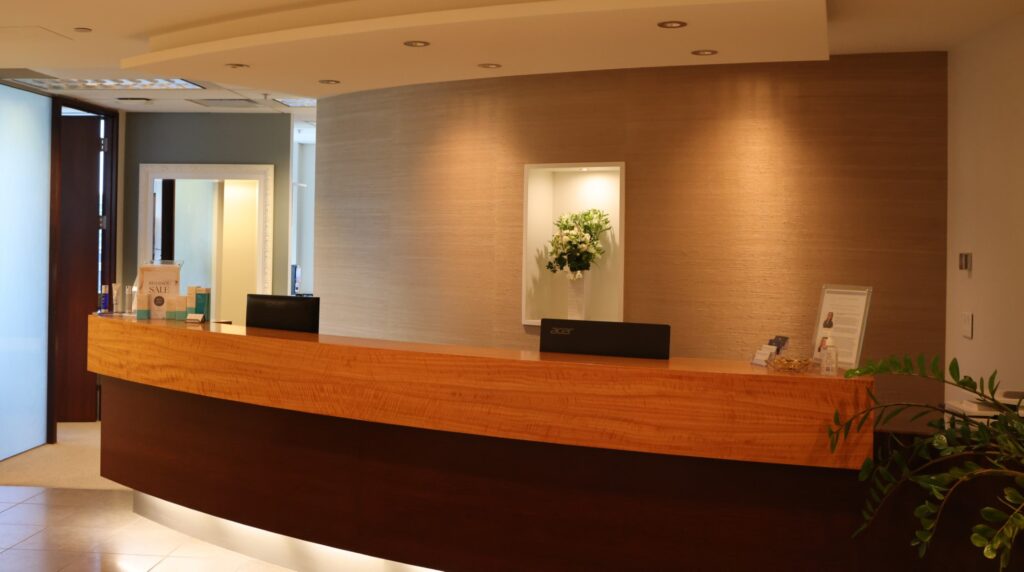Chemical peels can be a great way to rejuvenate your skin and give you a more youthful look. They’re cost-effective, relatively easy treatments that can remove built-up layers of dead skin cells, reduce the appearance of wrinkles, and leave your skin feeling smoother and softer.
You don’t need to be an expert in skincare to benefit from a chemical peel. All you need is an understanding of the different types available, how much they cost, what you should expect during treatment, and any potential risks or side effects.
We’ll cover everything you need to know about chemical peels so that you can make the best decision for your skin care needs.
[toc]

Benefits of Chemical Peels for Skin
You can get brighter, smoother skin with a chemical peel. Chemical peels are an effective way to improve the overall appearance of your skin and give it a healthier look.
By sloughing away dead skin cells and encouraging cell turnover, this type of treatment can reduce wrinkles and fine lines, minimize scarring from acne or other blemishes, even out the complexion, and unclog pores.
Regular treatments can also help keep future breakouts at bay.
Chemical peels work by applying a solution of acids like glycolic acid or salicylic acid to the face in order to dissolve the upper layers of the epidermis. This helps to reveal new skin that is free from impurities. Depending on the strength of the chemical used, you may experience some redness after your treatment, but this should subside quickly.
The benefits of having regular chemical peels are clear: smoother, brighter skin with fewer breakouts.
If you’re looking for a way to rejuvenate your complexion without any invasive procedures, then a chemical peel might be just what you need.
Types of Chemical Peels
Different types of chemical peels exist, and each one can provide unique benefits to your skin.
Light Chemical Peels
Superficial peels use mild acids such as alpha hydroxy or beta hydroxy to loosen the bonds between dead skin cells, causing them to shed easily. This type of peel is gentle enough for all skin tones and types and helps reduce oiliness while improving overall texture.
Medium Chemical Peels
Medium depth peels go a bit deeper into the dermis layer of the skin, prompting collagen production and cell turnover that reduces signs of aging like wrinkles, age spots, and sun damage. These are best suited for those with thicker skin or more advanced signs of aging.
Deep Chemical Peels
Deep chemical peels can reach even further into the dermal layers of the skin, removing damaged layers in order to produce fresh new tissue growth from surrounding healthy cells.
These are used most frequently on people who have deep wrinkles or areas of sun damage that need drastic improvement. However, these should be done by a trained professional because they carry higher risks than other peels due to their strength and depth.
Dr Anzarut Plastic Surgery now offers Phenol-Croton Oil Chemical Peels at both offices in BC.
A Phenol-Croton Oil Peel is a unique type of treatment different from any other type of skin peel or treatment. It has a unique ability to provide long and sustained improvements in skin quality. The modern Phenol-Croton Oil Peel was developed by Dr Richard Bensimon. He later called this his trademark Bensipeel. I recently learnt this technique from Drs Bensimon, Goldberg, and Whiteman at a hands on training session in Vancouver BC.
No matter which type you choose, it’s important to take proper care before and after any chemical peel in order to get the best results for your individual needs. Rejuvenating your complexion is possible with just one treatment, so don’t hesitate to explore what chemical peels can do for you.
How Much Does a Chemical Peel Cost?
The cost of a chemical peel depends on the type and extent of your skin concerns. Generally, a light chemical peel may range from $150 to $350 while deeper peels may cost up to several thousand dollars. Factors that affect the price include the type and strength of the chemicals used, as well as where you get it done.
It’s important to note that medical spas and dermatologists charge higher fees for chemical peels than other places such as estheticians.
The more aggressive types of chemical peels usually provide longer-lasting results, but they can also be quite painful and require more recovery time than less intensive treatments. The depth of the treatment will also determine the number of sessions needed to achieve desired results.
Additionally, some intense peels may require pre-treatment with products like Retin-A or hydroquinone, so it’s important to factor in these costs when budgeting for a chemical peel procedure.
It is advisable to consult with your dermatologist before making any decisions about undergoing a chemical peel procedure since there are risks involved depending on your skin type and condition. Your doctor can help you decide which type of peel would be most appropriate for you based on your individual needs, goals, and budget constraints.
Chemical Peel Procedure
Preparing for a Chemical Peel, understanding what to expect during the procedure, and being aware of recovery and aftercare are important when considering a chemical peel.
It’s essential that you discuss all aspects of the process with your doctor before getting one done. You should also make sure to follow any pre-procedure instructions they give you, which might include avoiding sun exposure or certain skin care products.
During the procedure itself, you’ll likely feel some stinging or burning sensations as the solution is applied; however, your doctor will monitor this and provide numbing agents if needed.
After the procedure, you’ll need to take specific steps for proper healing and recovery such as wearing sunscreen and avoiding certain activities.
Preparing for a Chemical Peel
Getting ready for a chemical peel can be a bit overwhelming, but with the right guidance and care, you’ll be peeling in no time.
Before getting your chemical peel, it’s important to discuss your expectations and objectives with your doctor. They’ll give you instructions on how to best prepare your skin before the procedure.
Depending on what type of chemicals are being used, you may need to stop using certain products or medications before treatment. You may also need to avoid direct sun exposure or use extra sunscreen when going outside.
It’s also important to take proper care of your skin after the procedure by following the advice of your doctor. This could include using moisturizers, avoiding activities that cause sweating, and wearing protective clothing like hats or scarves during outdoor activities. In addition, make sure not to apply any makeup at least 24 hours after the procedure so that the chemicals have enough time to work properly.
Taking these steps will help ensure that you receive optimal results from the chemical peel process.
What to Expect During the Procedure
During your chemical peel, you’ll experience some minor discomfort as the chemicals work to improve the appearance of your skin. Your doctor will begin by cleaning and drying your skin before applying the chemical solution.
You may feel a slight burning or tingling sensation when it’s first applied. The intensity of this feeling varies depending on the type of peel used and how deep into the layers of skin it penetrates.
The length of time that you have to leave it on also depends on the type of peel being applied, but typically lasts between five and 15 minutes. During this time, you may be asked to fan yourself with a magazine or use a handheld fan in order to cool off if necessary.
Afterward, your doctor will wash off the solution and apply an ointment to help soothe any residual irritation or redness in affected areas.
Chemical Peel Recovery & Aftercare
Recovery from a chemical peel can take several days, so it’s important to follow your doctor’s aftercare instructions. Depending on the type of peel you receive, you may experience some redness and swelling that should subside within two to three days.
After the procedure, your doctor will likely recommend cold compresses or ice packs to reduce any discomfort. You may also be asked to apply an antibiotic ointment or petroleum jelly until the skin has healed completely.
Additionally, it’s important to keep your skin moisturized and out of direct sunlight for at least two weeks after the treatment.
In addition to following guidelines given by your doctor, it is essential that you avoid any activities that could further irritate or damage your skin during recovery. This includes staying away from scrubbing or exfoliating products as well as swimming in chlorinated pools and hot tubs because these can all cause irritation and dryness.
It is also beneficial to wear a wide-brimmed hat when outdoors during this time period as UV exposure can worsen peeling and discoloration post procedure.
By following these simple steps, you’ll have a successful chemical peel experience with minimal downtime.

Potential Risks and Side Effects of Chemical Peels
You may experience side effects such as redness, swelling, or itching after a chemical peel. Additionally, there is the potential for scarring with deeper peels if the skin doesn’t heal properly.
Pigment changes are also possible and can occur over time. This includes hyperpigmentation (darkening) or hypopigmentation (lightening). It’s important to note that these pigment changes may be permanent in some cases.
Be sure to discuss all potential risks of chemical peels with your doctor before proceeding. People with certain medical conditions like eczema or psoriasis are more likely to experience complications from a chemical peel and should avoid them altogether. Likewise, those who take medications such as isotretinoin shouldn’t have this type of procedure done as it could aggravate existing skin conditions.
The best way to reduce the risk of side effects is by following your doctor’s instructions carefully when it comes to pre- and post-treatment care. This includes using sunscreen after the procedure and avoiding sun exposure until fully healed.
It’s also advisable to avoid picking at any peeled skin since this can compromise results and lead to further complications down the road.
Chemical Peel Results
The results of a chemical peel can vary depending on the type and depth of the procedure. For lighter peels, such as those containing alpha-hydroxy acids, you may experience some slight flaking or redness for a few days after treatment. Your skin should be fully healed within 7 to 10 days.
Deep peels with more aggressive ingredients like TCA or phenol will require more downtime and healing time, but can give dramatic results that last for several years. Depending on your individual condition, you might see improvement in wrinkles, discoloration, acne scarring, or sun damage.
Following your chemical peel treatment, it’s important to keep your skin protected from UV light with sunscreen and hats to prevent further sun damage. Additionally, you may want to use moisturizing products specifically designed for post-peel care as this will help to protect your new layer of skin while it continues to heal and become stronger over time.
You may also want to look into other skincare treatments such as microdermabrasion or laser skin resurfacing if you desire additional improvements in texture and tone beyond what a chemical peel can do alone.
Who is a Candidate For a Chemical Peel?
If you’re looking to improve the appearance of your skin, a chemical peel may be a good option for you.
Chemical peels can help reduce acne scars, fine lines and wrinkles, and sun damage.
You should talk to your doctor or dermatologist to see if this treatment is right for you and discuss any potential risks or side effects.
Chemical Peel for Acne Scars
Dread those acne scars no more. A chemical peel can help reduce their appearance for smoother, clearer skin. Chemical peels use a combination of acids and chemicals to exfoliate the top layer of skin, making way for new, fresh skin cells to develop underneath.
This process helps reduce the appearance of acne scars by evening out the texture and color of your skin. Depending on the severity of scarring, multiple treatments may be necessary to achieve desired results.
Chemical peels aren’t recommended for everyone; they’re best suited for people with moderate acne scarring who’ve tried other treatments without success. It’s important to discuss any potential risks or side effects with your doctor prior to undergoing treatment so you fully understand how a chemical peel can help improve your condition.
With proper care and maintenance following treatment, you can enjoy clearer, healthier-looking skin free from unsightly acne scars.
Chemical Peel for Fine Lines and Wrinkles
Are you starting to notice wrinkles and fine lines? A chemical peel can help reduce their appearance for smoother, younger-looking skin. Chemical peels are performed by using a chemical solution to exfoliate the top layers of the skin.
This process helps to remove any dead skin cells and stimulate production of new, healthier skin cells. Peels come in different strengths depending on your needs, so it’s important to speak with a dermatologist or aesthetician before treatment.
The most common types of chemical peels used for wrinkles and fine lines are glycolic acid, salicylic acid, lactic acid, mandelic acid, and trichloroacetic acid (TCA). Each type has different effects on the skin; some may be more aggressive than others.
After treatment, your aesthetician will apply a moisturizer or sunscreen to replenish hydration levels in your skin and protect it from further sun damage. With regular treatments over time, you can look forward to smoother and brighter-looking skin with fewer wrinkles.
Chemical Peel for Sun Damage
Do you have sun-damaged skin? A chemical peel can help restore your youthful complexion without having to worry about dryness or irritation.
Chemical peels are a type of cosmetic procedure that involves applying a solution to the face which gently removes dead skin cells and stimulates new cell growth. This helps reduce the appearance of fine lines, wrinkles, age spots, and other signs of sun damage while also improving overall skin tone.
Chemical peels can be performed by dermatologists or experienced aestheticians using a variety of techniques according to your specific needs. The procedure typically takes 30 minutes or less and results in smoother, more evenly toned skin with improved texture that can last for months.
It is important to note that chemical peels may cause some redness and sensitivity, so it’s best to discuss any possible risks with your doctor before undergoing treatment.
Chemical Peel vs. Microdermabrasion: Choosing the Right Treatment
Confused about which skin treatment to choose? Chemical peels and microdermabrasion offer different benefits, so it’s important to evaluate your individual needs and decide which will provide the best results.
A chemical peel is a procedure in which an acid solution is applied to the skin, causing it to exfoliate and eventually peel off. This helps reduce scarring, discoloration, and other signs of sun damage.
Microdermabrasion involves using a special device that exfoliates the top layer of skin with tiny crystals or diamond-tipped wands. It can help improve wrinkles, age spots, enlarged pores, and other minor skin imperfections caused by sun exposure.
When deciding between chemical peels and microdermabrasion for treating sun damage, think about what results you want from the treatment. Chemical peels are great for reducing acne scars and discoloration but may not be as effective for targeting fine lines or wrinkles.
Microdermabrasion can help smooth out wrinkles but may not be as beneficial when dealing with deeper acne scars or hyperpigmentation issues.
It’s also important to consider how much downtime you’re willing to take after each procedure: Chemical peels require more time for healing than microdermabrasion does because your skin has actually been burned away during the process – plus you’ll need protection from UV rays during recovery time.
With microdermabrasion there’s no recovery time needed – just immediately enjoy softer, smoother-looking skin. So weigh up your options carefully before making a decision on which one is right for you.
You may also be interested in the following minimally invasive procedures:
FAQ (Frequently Asked Questions)
A chemical peel is a cosmetic procedure that involves applying a chemical solution to the skin to exfoliate and improve its appearance. It helps to reduce fine lines, wrinkles, acne scars, and uneven skin tone.
During a chemical peel, the solution applied to the skin causes the top layers to peel off, revealing smoother and younger-looking skin underneath. It also stimulates the production of collagen, which improves skin texture and elasticity.
When performed by a trained professional, chemical peels are generally safe. However, there can be some temporary side effects like redness, peeling, and mild discomfort. It’s crucial to follow post-treatment instructions for optimal results and minimize the risk of complications.
Chemical peels can help improve various skin concerns such as fine lines and wrinkles, acne and acne scars, hyperpigmentation, sun damage, uneven skin tone, and dullness. Different types of peels are available to target specific concerns.
The duration of a chemical peel procedure can vary depending on the type and depth of the peel. Generally, it takes about 30 minutes to an hour. Deeper peels may require longer recovery periods.
The number of sessions needed depends on the individual’s skin condition and desired outcome. Mild peels may require multiple sessions spaced a few weeks apart, while deeper peels may provide significant results with a single treatment.
The downtime can vary depending on the type and depth of the peel. Mild peels may cause minimal downtime with some redness and peeling that subsides within a few days. Deeper peels may require a week or more of downtime for the skin to heal completely.
Chemical peels can be tailored to suit different skin types, but certain precautions are necessary for individuals with darker skin tones. Consulting with a dermatologist or aesthetician is crucial to determine the most suitable peel for your skin type.
Post-treatment care is essential to maximize results and minimize complications. This typically involves gentle cleansing, moisturizing, avoiding direct sun exposure, and using sunscreen. Your skincare professional will provide specific instructions.
The results of a chemical peel are not permanent, as the natural aging process and external factors can impact the skin over time. However, with proper skincare maintenance and periodic treatments, the effects of a chemical peel can be long-lasting and provide ongoing skin improvement.
Remember, it’s important to consult with a qualified professional to assess your specific needs and determine the most suitable approach for your skin before undergoing a chemical peel.

